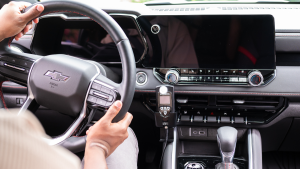One of the most common causes of falsely high breathalyzer readings is the existence of mouth alcohol.
The breathalyzer’s internal computer is making a major assumption when it captures a breath sample and then analyzes it for blood alcohol concentration (BAC): It assumes that the alcohol in the breath sample came from alveolar air — that is, air exhaled from deep within the lungs. Since we are trying to measure how much alcohol is in the blood, rather than in the breath, the computer applies a formula to translate the results. This formula is based upon the average ratio of alcohol in the breath to alcohol in the blood. This so-called partition ratio is 1 to 2100 — that is, in the average person there will be 2100 units of alcohol in the blood for every unit measured by the breathalyzer in the breath. Put simply, the machine’s computer multiplies the amount of alcohol detected in the suspect’s breath sample by 2100 and reports that as the blood alcohol level.
But what if the alcohol in the sample is not from the lungs?
Too bad: the machine doesn’t know any better. If there is even a miniscule amount of alcohol in the DUI suspect’s mouth or throat, it will be tremendously magnified by the breathalyzer and it will report a much higher BAC than the true one.
Alcohol can be found in the mouth for a number of reasons. The most obvious is that the individual has recently consumed some alcohol; it usually takes 15-20 minutes for the alcohol to dissipate through the rinsing action of saliva. Or he/she may have recently used mouthwash or breath freshener (most contain fairly high levels of alcohol) — possibly to disguise the smell of alcohol when being pulled over by police. See my earlier post, Breath Fresheners and Breathalyzers.
The most common source of mouth alcohol is from eructation (burping or belching). This causes the liquids and/or gases from the stomach — including alcohol if it is there — to rise up into the soft tissue of the esophegus and mouth, where it will stay until it has dissipated. For this reason, police officers are required to keep a DUI suspect under observation for at least 15 minutes prior to administering a breath (in reality, however, many if not most officers are unwilling to stand around watching a suspect for a quarter of an hour).
Acid reflux can greatly exacerbate this problem. As was discussed in a previous post, GERD, Acid Reflux and False Breathlayzer Results, the stomach is normally separated from the throat by a valve. When this valve becomes herniated, there is nothing to stop the liquid contents in the stomach from rising and permeating the esophegus and mouth. The contents — including any alcohol — is then later breathed into the breathalyzer. Since it has not yet been absorbed through the stomach wall and into the blood and eventually into the lungs, this alcohol should not be read as breath from the lungs and multiplied by 2100. Of course, the breathalyzer doesn’t know this. See the article by Kechagias, et al., “Reliability of Breath-Alcohol Analysis in Individuals with Gastroesophogeal Reflux Disease”, 44(4) Journal of Forensic Sciences 814 (1999).
The mouth alcohol problem can also be created in other ways. Dentures, for example, will trap alcohol for much longer than 15-20 minutes. Periodental disease can also create pockets in the gums which will contain the alcohol for longer periods. And so on….
As the American Medical Association’s Committee on Medical Problems concluded in its Manual for Chemical Tests for Intoxication (1959): “True reactions with alcohol in expired breath from sources other than the alveolar air (eructation, regurgitation, vomiting) will, of course, vitiate the breath alcohol results.”
If you need to consult with a Los Angeles DUI lawyer, Orange County DUI attorney or Riverside DUI lawyer, contact The Law Offices of Lawrence Taylor at 888-777-3449. With offices in Los Angeles, Orange County, Riverside, and north San Diego County, the firm has limited its practice to DUI defense exclusively for 33 years and is consistently top-rated in surveys of Southern California attorneys, professional rating organizations and consumers.

